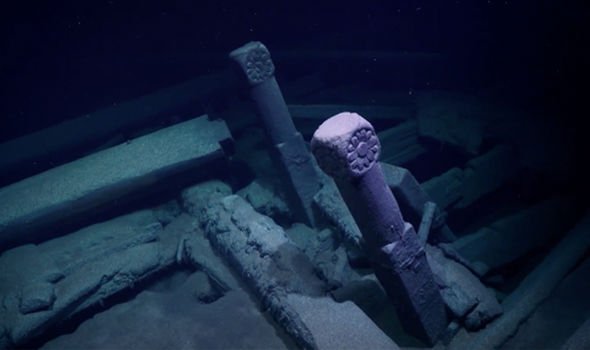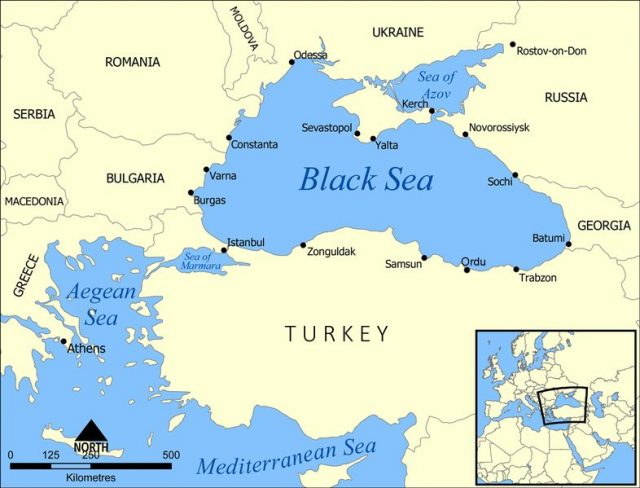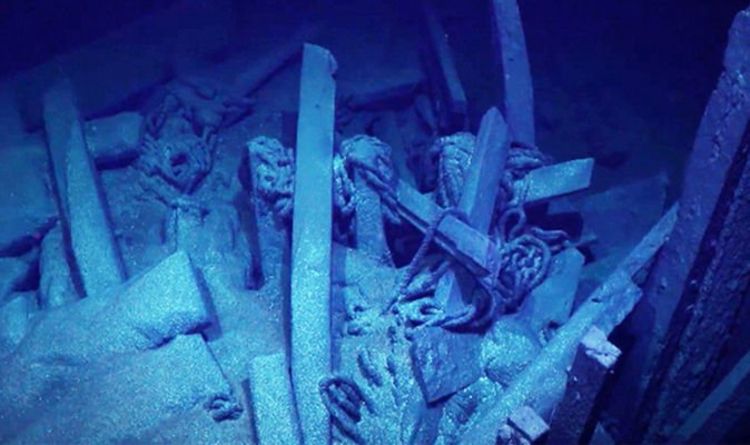Black Sea: Archaeologists usually spend their time digging deep into the earth, excavating for treasures and artifacts from ancient cultures and civilizations.
It’s easy to forget that some of these experts also investigate what lies beneath the dark, foreboding surfaces of oceans and seas, looking for clues into the seafaring pasts of many countries and cultures around the world.
The Black Sea has proved a boon to these maritime archaeologists, as its waters are the precise cold temperature needed to preserve any artifact that sinks to the sea floor. So when a ship goes down in those waters, it remains almost as intact as it was the day it sank.
A group called the Maritime Archaeology Project (MAP) was working in the waters off the coast of Bulgaria, assessing changing sea levels and how they have affected human communities over the years. (The group is comprised of experts from around the world, including the U.K., France, and America, among others).

They quite literally stumbled upon a a shipwreck from the Ottoman Empire that’s 300 years old. The wreck is deep, at a level not hospitable to conventional diving. A team sent down a piece of equipment that had a camera affixed to it, and therefore they could see all kinds of detail on pieces of the vessel.
For example, there are Islamic carvings on parts of the mast, which one team member described as “absolutely beautiful.” (Their work investigating this wreck was videotaped for a future documentary).
The series of documentaries, produced by Sky History in the U.K., is entitled “Black Sea Mystery,” which highlights a number of shipwrecks from this body of water that was once notorious difficult for sailors to cross. The Black Sea, once the most perilous for mariners to sail upon, is now a boon for those who seek, and recover, shipwrecks.
The team was stunned by the footage they got; one team member said, “It’s just unbelievable. It’s down 300 metres and we are looking at it. We are discovering it. Now…. for the very first time!” The awe in his voice is unmistakable.

Many maritime archaeologists of a number of groups have also been searching the Baltic Sea for years now, because it is so famous for the sheer number of vessels on its sea floor.
One such researcher, Vello Mass, said in 2004, “There are hundreds of Viking ships out there, hundreds of old trading ships, hundreds of warships. The Baltic is an archaeological paradise.”
These two seas have given divers and archaeologists innumerable opportunities to discover much about how ancient seafaring worlds operated, including the Vikings.
But discoveries aren’t only made in the deep, cold waters of the seas of Scandinavia.
Curiously, a massive ship was found in September, 2020, just outside a luxury hotel in Stockholm when renovations to it got underway. Workers discovered planks and other artifacts that made them quickly realize they had a valuable, significant relic right underfoot.
Experts from the Maritime Museum were called in, and excavation of the ship began in earnest.
While it may seem an unusual place to find a ship – in the heart of a city – the location was soon explained by a spokesperson for the Museum.
He said that there had been a naval shipyard, where boats were built and stored, on that very spot where the hotel stands, right up until the turn of the 17th century. Mystery solved.
These kinds of discoveries, whether made smack in the midst of a city or deep down on a seabed floor, teach us about a country’s culture and history.
Another Article From Us: ‘Polish Titanic’ Discovered 1350 Metres Above Sea Level in Mountain Lake
And learning that means, ultimately, that we learn about the people who once lived there, and that teaches us about the people who live there now, and perhaps something about the people who will live there in the future.
